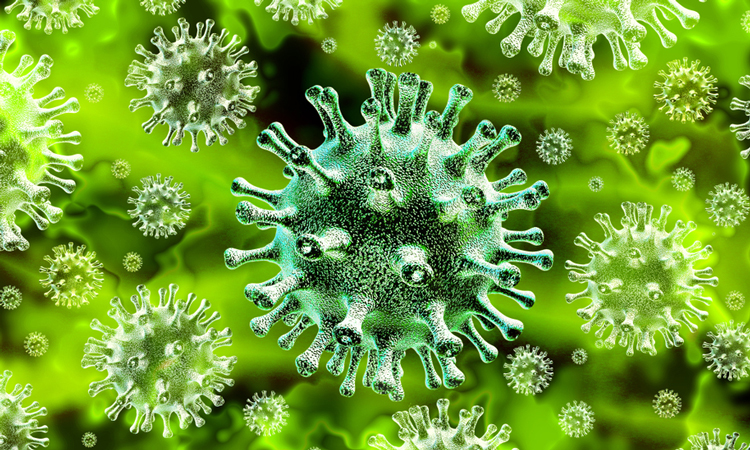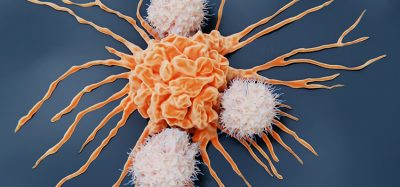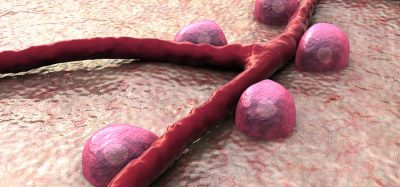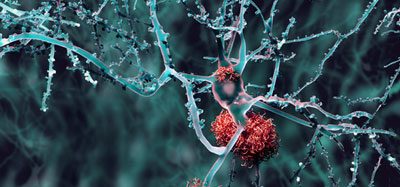Mechanism of action revealed for remdesivir, potential coronavirus drug
Posted: 3 March 2020 | Victoria Rees (Drug Target Review) | 16 comments
Researchers have demonstrated how the drug known as remdesivir works, presenting the viral RNA polymerase of coronaviruses as a target for these conditions.

A team of academic and industry researchers has reported new findings on how exactly an investigational antiviral drug stops coronaviruses. The paper was published the same day that the US National Institutes of Health (NIH) announced that the drug in question, remdesivir, is being used in the country’s first clinical trial of an experimental treatment for COVID-19, the illness caused by the SARS-CoV-2 virus.
Previous research in cell cultures and animal models has shown that remdesivir can block replication of a variety of coronaviruses, but until now it has not been clear how it does so. The researchers, from the University of Alberta, US, and Gilead, studied the drug’s effects on the coronavirus that causes Middle East Respiratory Syndrome (MERS). They found that remdesivir blocks a particular enzyme that is required for viral replication.
Coronaviruses replicate by copying their genetic material using an enzyme known as the RNA-dependent RNA polymerase. Until now, it has been difficult to get the polymerase complex that contains multiple proteins to work in a test tube.
“It hasn’t been easy to work with these viral polymerases,” Matthias Götte, a virologist and professor at the University of Alberta who led the study. He explained that this has slowed research into new drugs’ function.
Using polymerase enzymes from the coronavirus that causes MERS, scientists in Götte’s lab found that the enzymes can incorporate remdesivir, which resembles an RNA building block, into new RNA strands. Shortly after adding remdesivir, the enzyme stops being able to add more RNA subunits. This halts genome replication.
The scientists hypothesise that this might happen because RNA containing remdesivir takes on a strange shape that does not fit into the enzyme. To find out for certain, they would need to collect structural data on the enzyme and newly synthesised RNA. Such data could also help researchers design future drugs to have even greater activity against the polymerase. They suggest the viral RNA polymerase of coronaviruses as a target.
The study was published in the Journal of Biological Chemistry.
Related topics
Disease Research, Drug Targets, Enzymes, Research & Development, RNAs
Related conditions
Coronavirus, Covid-19, Middle East Respiratory Syndrome (MERS)
Related organisations
Gilead, University of Alberta, US National Institutes of Health (NIH)
Related people
Matthias Götte








Informative blog!!
Why do some patients show no symptoms at all??? WHY? Is it because their body possess an abundance of certain enzymes that inhibit virus replication? What is that enzyme?
asymptomatic infection can be seen by 2 mechanisms
1. due to variability in receptor gene expression which may vary between individuals as well as between cells, for COVID 19 receptor is ACE2 see below
ACE2provided by HGNC
Official Full Name
angiotensin I converting enzyme 2provided by HGNC
Primary source
HGNC:HGNC:13557
See related
Ensembl:ENSG00000130234 MIM:300335
Gene type
protein coding
RefSeq status
REVIEWED
Organism
Homo sapiens
Lineage
Eukaryota; Metazoa; Chordata; Craniata; Vertebrata; Euteleostomi; Mammalia; Eutheria; Euarchontoglires; Primates; Haplorrhini; Catarrhini; Hominidae; Homo
Also known as
ACEH
Summary
The protein encoded by this gene belongs to the angiotensin-converting enzyme family of dipeptidyl carboxydipeptidases and has considerable homology to human angiotensin 1 converting enzyme. This secreted protein catalyzes the cleavage of angiotensin I into angiotensin 1-9, and angiotensin II into the vasodilator angiotensin 1-7. The organ- and cell-specific expression of this gene suggests that it may play a role in the regulation of cardiovascular and renal function, as well as fertility. In addition, the encoded protein is a functional receptor for the spike glycoprotein of the human coronavirus HCoV-NL63 and the human severe acute respiratory syndrome coronaviruses, SARS-CoV and SARS-CoV-2 (COVID-19 virus). [provided by RefSeq, Mar 2020]
Expression
Biased expression in small intestine (RPKM 93.7), duodenum (RPKM 69.0) and 5 other tissues See more
The other reason for severity is underlying diseases, people with chronic lung disease do not have much functional cell reserves and when cells are infected their function declines rapidly
I’ve worked with ACE-2 in the lungs at Michigan State University for ~16years. Many people give the explanation you did, but there is NO EVIDENCE to support your explanation. Lots of people are looking, and I’m reviewing many of those studies, but…its not so clear. Other factors may explain it!!
I have a belief that some acids do not allow Covid-19 to attack playing a potential mechanism of defense. Regards.
May likely be that the functioning of the immune system is genetically determined. Persons who perish from this virus do so because their immune systems over-react, and produce a cytokine storm, which ultimately causes organ failure.
This faulty over-reaction of the immune system is most notable in the elderly, but the genetic factor may be paramount in other individual cases.
You have to understand that it is the immune system that causes the symtoms, not the virus itself. Because of that, they can vary greatly between the infected.
Based on the comments of Razia Jafri, what effect would occur to patients on ACE inhibitors ?
ARBs are good. Anti-inflammatory.
What effect would occur on patients on ACE inhibitors who are exposed to Corona virus 19?
ACE2 is NOT inhibited by ACE inhibitors….they act on ACE-1, a related but different enzyme
Important to examine the data while controlling for ABO blood type. There are data suggesting that the anti-A antibody, found in those with type O and B, may react with the SARS-Cov-2 spike protein and denigrate the viral replication process. Need to control for this variable in all studies of potential meds.
What about ACE2 receptor blockers like Cozaar do they block covid19 attachment
Is anybody looking at the PLA-2 which all of these viruses possess? Hydroxychloroquine has PLA-2 blocker properties and that is why it is partially effective. The use of a PLA-2 inhibitor may also reduce the severety of the symptoms before the virus reaches the lungs. The mechanism is similar to what is being disussed here.
Why did Gilead, other drug companies, researchers and government executives plug this drug so early and so strongly while they seemed to engage in an array of grant funded and big pharma funded fake studies while feint praising hydroxychloroquine (which functions like a vaccine and a cure) and building barriers into the system to prevent dying patients to get this medication. I am hoping the government will open an investigation into what happened.
Some parts sound similar to the hydroxychloroquine plus Zinc ion mechanism – the Zinc, if it gets into the cell through the hydroxy, confuses the ribosome and interrupts replication. Also, take a look at sirolimus/ rapamycin for cytokine storm interruption.